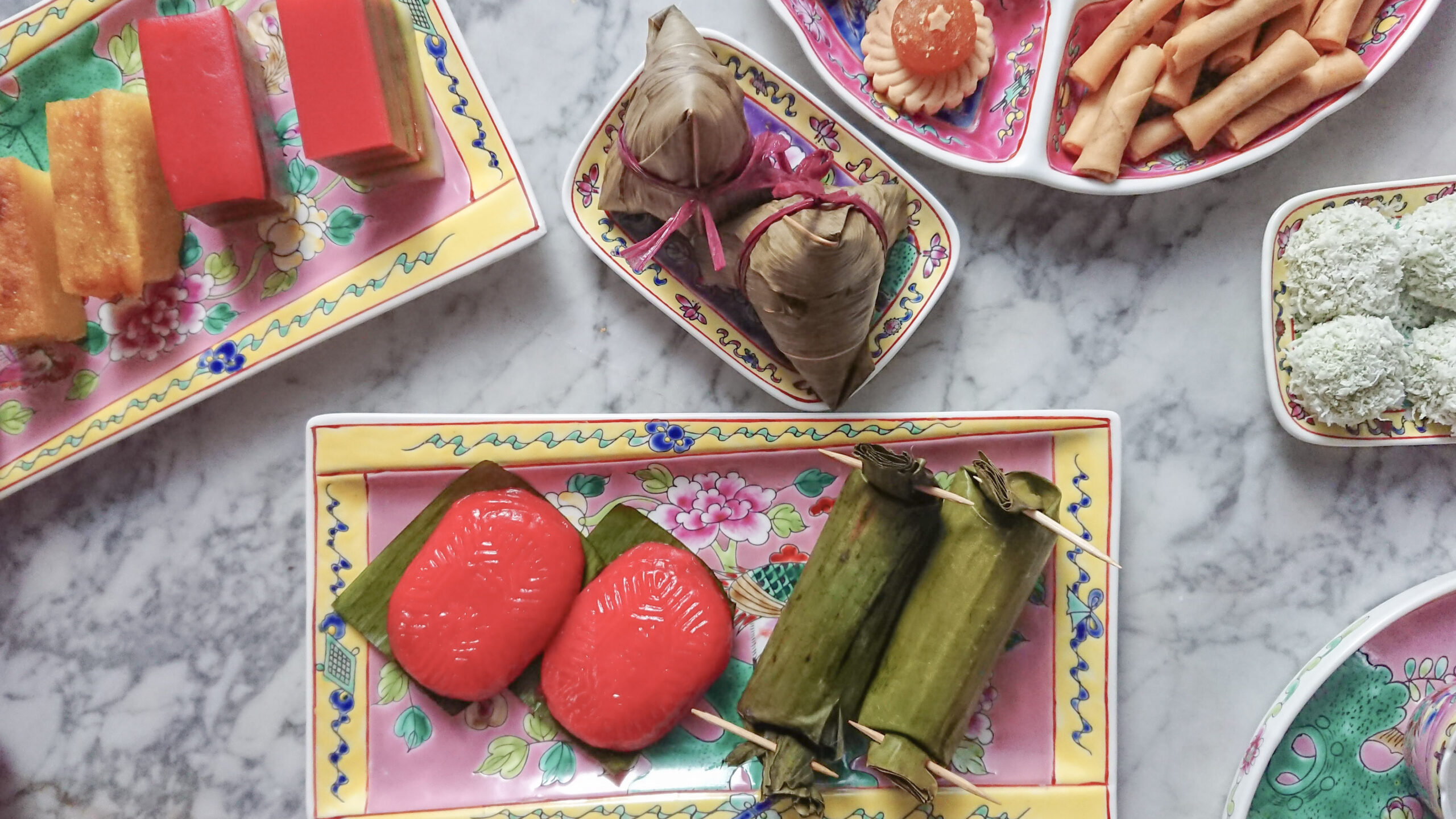
Nyonya kuehs, a tantalising array of bite-sized traditional desserts, hold an essential place in the culinary tapestry of Southeast Asia. With their vibrant colours, intricate designs, and harmonious blend of flavours, these sweet treats are not just a feast for the palate, but also a testament to the rich cultural heritage of the Peranakan people, also known as the Straits Chinese.
Origins of Nyonya Kuehs: A Fusion of Cultures
The term “Nyonya” encapsulates the legacy of female descendants from Chinese immigrants who established their roots in the Malay Archipelago. While these settlers did intermarry with local Malay or Indonesian women, it’s important to recognise that the essence of Peranakan culture transcends mere racial unions. Rather, it beautifully signifies the harmonious marriage of diverse cultures. This union gave rise to a distinct heritage, blending the intricate threads of Chinese and Southeast Asian traditions into the vibrant tapestry that is the Peranakan identity.
Nyonya kuehs represent delicacies that showcase a profound blend of cultures. They serve as a testament to the culinary creativity of the Peranakan community, seamlessly weaving together influences from various traditions. These sugary delights incorporate Chinese culinary techniques and staples, including glutinous rice flour, coconut milk, and pandan leaves. Simultaneously, they harmonise with indigenous flavours, such as palm sugar, grated coconut, and tropical fruits, creating a symphony of textures and tastes that beautifully mirror the multicultural essence of the region.
Diverse Varieties and Flavours
The world of Nyonya kuehs is as diverse as it is delicious. These desserts come in a wide range of forms, each with its own distinct flavours and textures. Some popular varieties include:
Kueh Lapis: A multi-layered steamed cake made from alternating layers of coloured tapioca flour batter and coconut milk. Its rainbow-like appearance is as captivating as its sweet, chewy taste.
Kueh Dadar: Also known as “rolled pandan crepes,” this kueh features green pandan-infused crepes rolled around a coconut and palm sugar filling. It’s a harmonious blend of fragrant pandan and rich coconut flavours.
Kueh Bingka: A baked tapioca cake that boasts a delightful contrast between its crunchy exterior and chewy interior. It’s often infused with aromatic grated coconut and has a subtly sweet taste.
Ang Ku Kueh: These petite tortoise-shaped rice cakes are filled with sweet fillings like mung bean or ground peanut, wrapped in soft, chewy glutinous rice skin. The strikingly detailed moulds used to create these kuehs add to their visual appeal.
Preserving Tradition in Modern Times
Nyonya kuehs hold a special place in the hearts of the Peranakan community and have also captured the admiration of food enthusiasts worldwide. As with many traditional cuisines, the art of making Nyonya kuehs has been passed down through generations. However, in today’s fast-paced world, the delicate process of creating these treats faces challenges in terms of time and expertise.
In summary, Nyonya kuehs not only tantalise the senses but also symbolise the power of cultural connections that enrich our world. They extend an invitation to all, regardless of background, to partake in the vibrant legacy of the Peranakan community. As we forge ahead in an ever-changing landscape, let the preservation and celebration of these cherished traditions be a pathway for everyone to engage with, appreciate, and contribute to the enduring story of the Peranakan heritage. Just as the flavours of Nyonya kuehs meld and create something extraordinary, so too can we all find our place within this mosaic of cultures, creating a shared future that honours the past.

